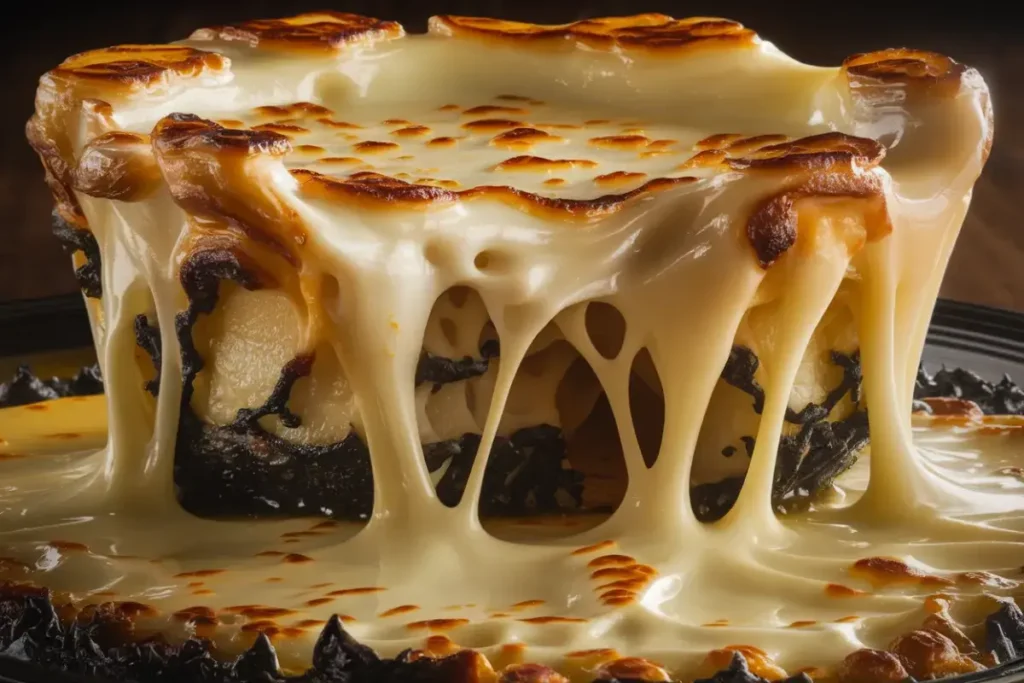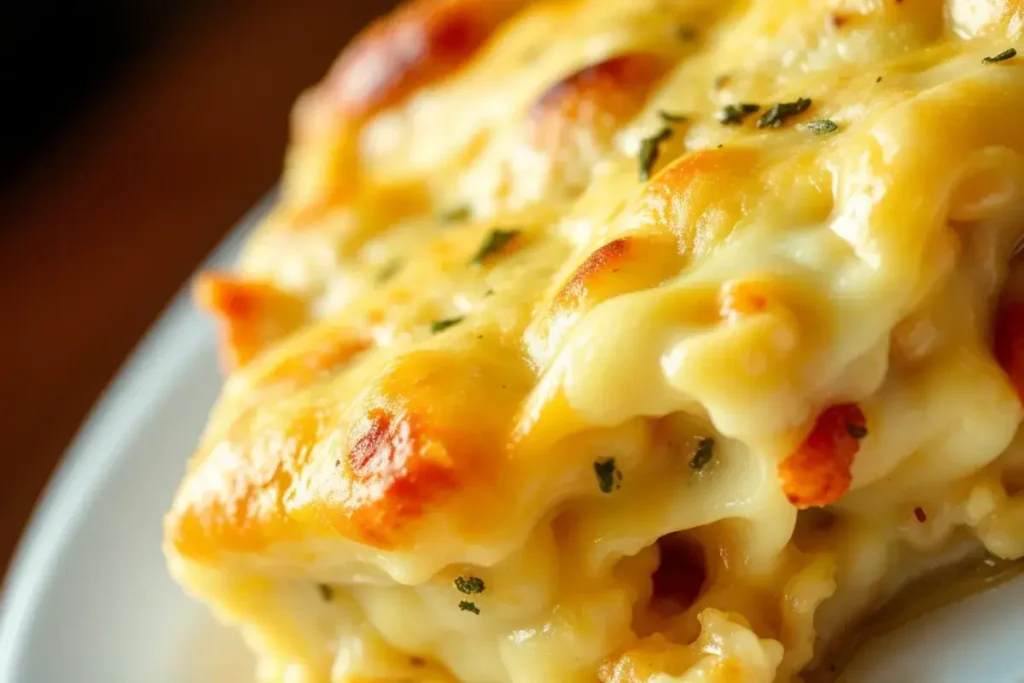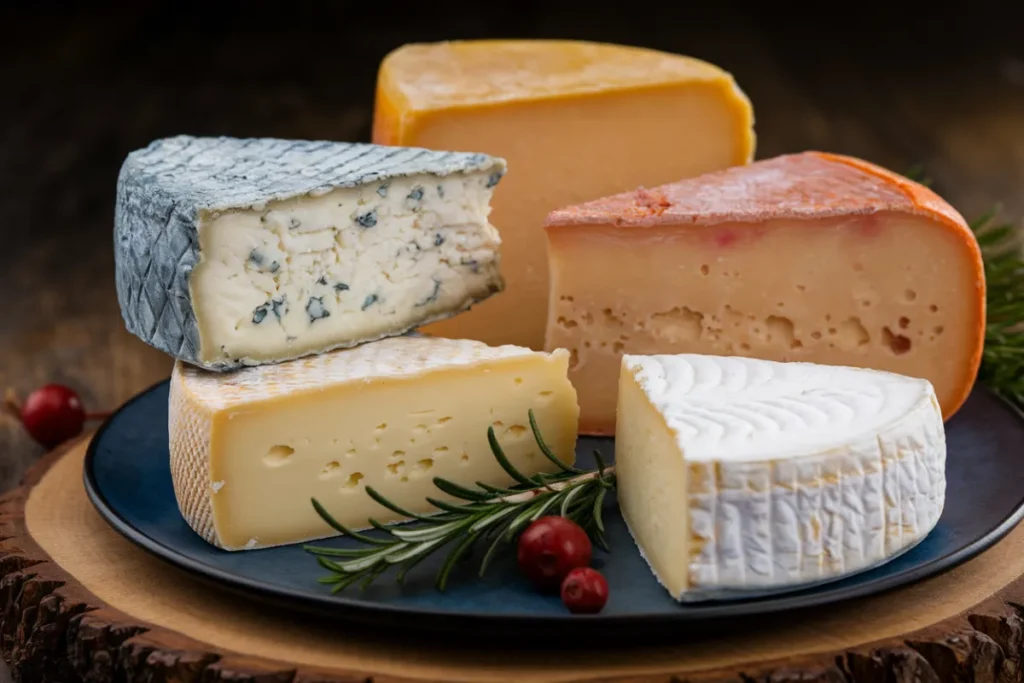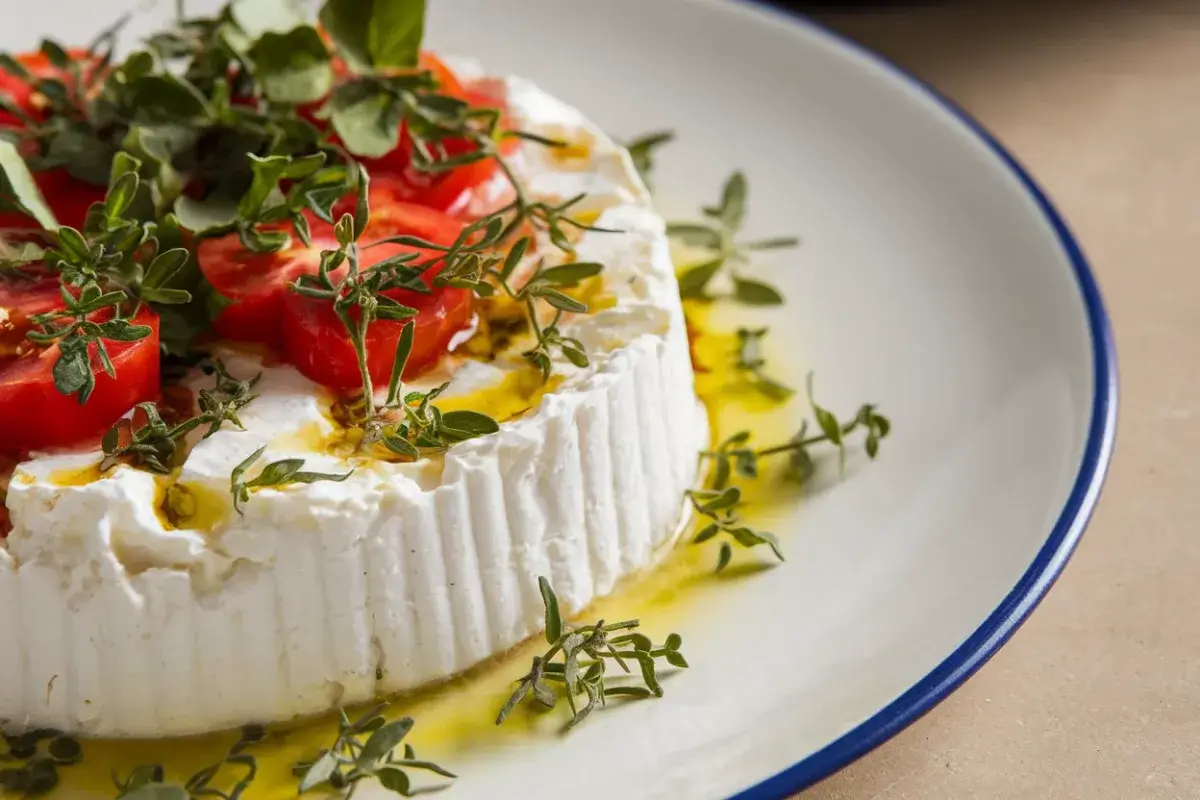When you think of melting cheese, you might envision gooey mozzarella or creamy cheddar stretching and bubbling in your favorite dishes. But what about cottage cheese? Many wonder if cottage cheese behaves the same way in the oven. Spoiler alert: it doesn’t! Cottage cheese doesn’t melt like traditional cheeses, but it has its own unique qualities that make it perfect for many baked dishes.
In this article, we’ll explore what happens to cottage cheese when you bake it, why it doesn’t melt like other cheeses, and how you can use it effectively in cooking. If you’re someone who loves experimenting with cheese in the kitchen, you’ll want to read on to understand why this low-fat, high-protein cheese is such a versatile ingredient.
Understanding Cottage Cheese and Its Texture
Cottage cheese is a fresh cheese made from the curds of cow’s milk. It’s known for its slightly tangy flavor and distinct texture, with small curds that give it a lumpy appearance. Cottage cheese comes in different varieties, including dry curd (no added cream), low-fat, and full-fat, depending on the amount of cream mixed in with the curds.
The Composition of Cottage Cheese
The key to understanding why cottage cheese doesn’t melt lies in its composition. Unlike other cheeses, cottage cheese has:
- High protein content
- Low fat compared to cheeses like cheddar or mozzarella
- High moisture content due to the presence of curds and whey
These factors play a significant role in how it reacts when exposed to heat.
What Happens to Cottage Cheese When Heated?
So, what happens when you put cottage cheese in the oven or on the stove? Essentially, cottage cheese softens when it’s baked, but it doesn’t melt in the way that other cheeses do. The curds become firmer, and the water content evaporates, but it won’t create a smooth, gooey texture like mozzarella would. This is because it’s a fresh cheese, meaning it hasn’t undergone the aging process that gives other cheeses their elasticity. This behavior makes it ideal for dishes like cottage cheese bread, where the curds add texture without melting.
If you’re curious about the best cheeses for melting, you can learn more about the ones that work well for gooey dishes here. Understanding how these cheeses differ from cottage cheese will help you make better decisions when baking.
Why Some Cheeses Melt and Cottage Cheese Doesn’t

The primary reason cottage cheese doesn’t melt is its low-fat and high-moisture content. Most melting cheeses, such as gouda or mozzarella, have a higher fat content that allows them to liquefy when exposed to heat. In contrast, cottage cheese has curds that stay intact, even at high temperatures.
Types of Cheeses That Melt Well vs. Cottage Cheese
Let’s break it down:
- Melting cheeses like cheddar, gouda, and mozzarella have a high fat-to-moisture ratio, which helps them melt smoothly.
- Cottage cheese, however, lacks the fat content needed for a smooth melt. Instead of turning gooey, it firms up and may become slightly chewy in texture when baked.
For dishes where you need a cheese that melts, check out this helpful guide on the best cheeses for melting.
Does Cottage Cheese Melt When Baked?
When you bake cottage cheese, it softens and adds a creamy texture, but it doesn’t melt. This means that while the curds remain separate, they create a pleasant, slightly chewy consistency. If you’re making a dish like lasagna or casserole, cottage cheese won’t run and ooze like mozzarella, but it will add moisture and creaminess without the heaviness of melted cheese.
Here’s what happens to cottage cheese during baking:
- The curds firm up but don’t melt.
- The moisture content reduces as the dish cooks.
- It adds a creamy layer to your dish without becoming gooey.
This makes cottage cheese an ideal ingredient for many baked dishes, particularly if you want a lighter, protein-packed alternative to traditional melting cheeses.
How to Use Cottage Cheese in Baked Dishes

While cottage cheese doesn’t melt in the traditional sense, it still plays a fantastic role in many baked dishes. Its creamy texture and high protein content make it an excellent addition to recipes where you don’t necessarily need that gooey, stretchy cheese effect. Let’s explore some of the best ways to incorporate cottage cheese into your cooking.
Cottage Cheese in Casseroles
Cottage cheese works wonders in casseroles. Thanks to its ability to hold its shape while softening, it provides a nice contrast to ingredients like vegetables, meats, and grains. When baked, the curds firm up but add moisture and creaminess without becoming runny. If you’re curious about other uses, try this cottage cheese bread recipe for a protein-packed option.
Why it works:
- The curds offer a chewy texture that complements the other ingredients.
- It provides a light, protein-rich alternative to heavier cheeses.
Tip: Combine cottage cheese with another cheese like cheddar or mozzarella if you want a mix of textures—some melting, some firmness.
Cottage Cheese in Lasagna
If you’ve ever swapped ricotta for cottage cheese in lasagna, you’ve probably noticed a subtle difference in texture. While ricotta is smooth, cottage cheese gives your lasagna a heartier feel. The curds won’t melt but blend well with other layers, providing a creamy bite.
Why it’s a popular choice in lasagna:
- Cottage cheese is lower in fat compared to ricotta, making it a healthier option for those watching their calorie intake.
- It adds creaminess without the dish becoming overly dense.
Pro Tip: To make cottage cheese smoother for lasagna, consider blending it briefly before layering it into your dish. This breaks up the curds and creates a consistency closer to ricotta.
Tips for Baking with Cottage Cheese
Baking with cottage cheese requires a few tweaks to ensure you get the best possible result. Since it doesn’t melt, you want to focus on its strengths: texture, creaminess, and moisture.
How to Prevent Cottage Cheese from Becoming Watery in Baked Dishes
One common issue with cottage cheese is that it can become watery when exposed to high heat. This is because of its high moisture content. Here’s how to avoid that:
- Drain excess liquid: Before adding cottage cheese to a recipe, make sure to drain any excess liquid, especially if you’re using a creamy variety.
- Combine with thickening ingredients: Adding eggs or flour can help absorb excess moisture and improve the texture of your dish.
- Bake uncovered: This allows moisture to escape during baking, preventing your dish from becoming too wet.
Blending Cottage Cheese for Smoother Consistency
If you prefer a smoother texture, blending cottage cheese can be a game-changer. By blending it for a few seconds, you’ll create a consistency more akin to ricotta or cream cheese. This method works well in dishes like lasagna or baked ziti where you want a creamy layer but don’t necessarily need the curds.
How to blend cottage cheese:
- Place it in a food processor or blender.
- Blend for 20-30 seconds until smooth.
- Use the blended mixture as you would use ricotta or other soft cheeses in recipes.
This trick can also help reduce any graininess that some people might dislike in cottage cheese.
Best Cottage Cheese Substitutes for Baking

If you’re looking for an alternative to cottage cheese in a recipe—maybe because you want a melting effect or a smoother texture—there are several substitutes that work well. Here’s a rundown of the best options:
Ricotta Cheese
A close relative to cottage cheese, ricotta is often used interchangeably in many recipes. Ricotta has a creamier texture and will give a smoother finish in dishes like lasagna or casseroles. While it won’t melt, it blends beautifully.
Cream Cheese
For a thicker, richer option, cream cheese is a great substitute. It adds a more luxurious texture and a slight tang. Use it in smaller quantities since it’s much heavier than cottage cheese.
Mascarpone
If you want a rich, buttery cheese that melts slightly and blends easily, mascarpone is a great option. It’s much higher in fat and provides a very creamy, melt-in-your-mouth texture in baked dishes.
FAQs About Cottage Cheese and Baking
Can You Bake Cottage Cheese in Lasagna?
Absolutely! Cottage cheese is often used in place of ricotta in lasagna recipes. While it won’t melt, it adds a creamy, hearty layer that blends well with pasta and sauce. Some people prefer it because it’s lower in fat and higher in protein than ricotta.
Does Cottage Cheese Curdle When Baked?
No, cottage cheese doesn’t typically curdle when baked. However, if the temperature is too high or the moisture isn’t managed, you might notice the curds firming up more than you’d like. To avoid curdling, ensure you bake at moderate temperatures and combine it with ingredients like eggs or other cheeses.
Can You Melt Cottage Cheese in a Pan Like Other Cheeses?
No, cottage cheese doesn’t melt in a pan like cheddar or mozzarella. Instead, it softens and may separate slightly. If you want to use it in a creamy sauce, blend it beforehand and mix it with other ingredients to achieve a smoother consistency.
How Do You Make Cottage Cheese Taste Better When Baked?
There are many ways to enhance the flavor of cottage cheese in baked dishes. Here are a few tips:
- Add herbs and spices like garlic, basil, or oregano.
- Mix it with other cheeses to create a balanced flavor profile.
- Season well with salt and pepper to bring out its subtle tang.
Conclusion: Does Cottage Cheese Melt When You Bake It?
In conclusion, cottage cheese doesn’t melt like other cheeses, but that doesn’t mean it’s not valuable in baked dishes. Instead of creating a gooey layer, it adds creaminess, moisture, and a pleasant chewiness that complements a variety of recipes. Whether you’re making a casserole, lasagna, or another baked dish, cottage cheese can enhance both the texture and nutritional value without the need to melt.
It’s a versatile, healthy alternative that brings its own unique charm to the table. So next time you’re baking, don’t shy away from using cottage cheese—even if it doesn’t melt like cheddar, it’s got plenty to offer!

